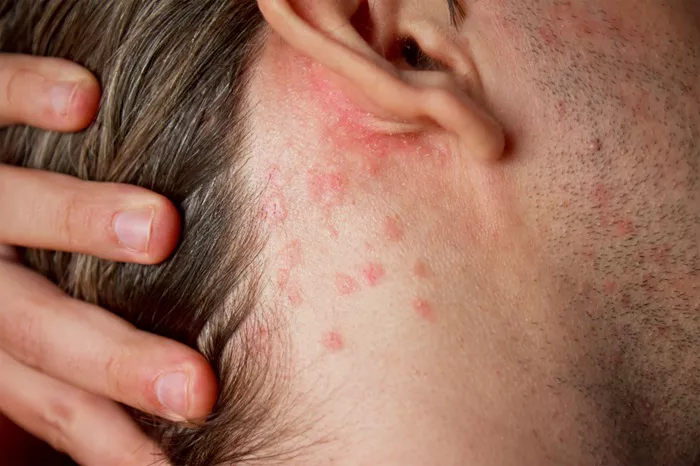Skin rashes can be distressing and uncomfortable, manifesting as changes in skin color, texture, or appearance. Often, they are harmless and short-lived, but in some cases, they may require medical intervention. This article explores the various causes of skin rashes, highlights the role of antibiotics in treating bacterial skin infections, and provides guidance on when to seek medical attention.
Skin Rashes: Causes and Treatments
Skin rashes can arise from numerous causes, including infections, allergic reactions, and chronic dermatological conditions. The treatment for a skin rash largely depends on its underlying cause. Here we discuss the most common types of skin rashes and their appropriate treatments.
Bacterial Skin Infections
Bacterial skin infections such as impetigo, cellulitis, and folliculitis are common causes of skin rashes. These conditions often require treatment with antibiotics to clear the infection and prevent complications.
Impetigo is a highly contagious infection characterized by red sores, which quickly rupture to leave behind a brownish crust. It mostly affects children and is commonly treated with topical antibiotics such as mupirocin. For more severe cases, oral antibiotics like amoxicillin may be prescribed.
Cellulitis presents as a swollen, red area that feels hot and tender to the touch and can spread rapidly. Treatment typically involves oral antibiotics, such as cephalexin or dicloxacillin. In severe cases, intravenous antibiotics may be required.
Folliculitis, the inflammation of one or more hair follicles, usually appears as small red bumps or white-headed pimples around hair follicles. Mild cases may resolve on their own, but more persistent forms might be treated with topical creams or oral antibiotics, depending on the severity and extent of the infection.
Viral Skin Rashes
Viral infections like shingles, chickenpox, or measles also cause skin rashes. Unlike bacterial infections, viral rashes do not respond to antibiotics.
Shingles (herpes zoster) typically presents as a painful rash on one side of the body and is treated with antiviral medications such as acyclovir or valacyclovir, especially when initiated early to reduce the risk of complications.
Chickenpox causes itchy red spots that turn into fluid-filled blisters. Treatment focuses on symptom relief through antihistamines and calamine lotion, as well as antiviral drugs in certain cases.
Measles produces a characteristic rash along with other symptoms like fever and a cough. There is no specific antiviral treatment for measles; care is supportive, focusing on relieving symptoms and addressing complications should they arise.
Fungal Skin Rashes
Fungal infections such as ringworm or athlete’s foot result in scaly rashes and are treated with antifungal medications, not antibiotics. Options include topical antifungals like clotrimazole or terbinafine. Severe or widespread fungal infections might require oral antifungal treatments.
Allergic Reactions and Other Causes
Eczema (atopic dermatitis) and psoriasis are chronic conditions that produce rashes but require specific treatments such as topical steroids, moisturizers, or more advanced medications like biologics, rather than antibiotics.
Contact dermatitis arises from direct skin exposure to an allergen or irritant. Treatment involves avoiding the triggering substance, applying topical corticosteroids, and using emollients to soothe the skin.
Drug reactions can also cause rashes, which may resolve once the offending medication is discontinued. Severe reactions may require corticosteroids or other supportive care.
The Importance of Diagnosis
Self-diagnosing and treating a skin rash with antibiotics without medical guidance can lead to ineffective treatment and contribute to antibiotic resistance. It is crucial to consult a healthcare professional for an accurate diagnosis and appropriate treatment recommendations.
Risks of Antibiotic Misuse
Misusing antibiotics can lead to significant problems, such as antibiotic resistance, where bacteria evolve to resist the effects of these drugs, making infections harder to treat. Always use antibiotics as prescribed by a healthcare professional and complete the full course of treatment, even if symptoms improve earlier.
Home Care for Skin Rashes
General advice for managing skin rashes includes:
1. Keeping the affected area clean and dry.
2. Avoiding scratching, which can worsen the rash and lead to infections.
3. Applying soothing lotions or cool compresses to alleviate discomfort.
When to Seek Medical Attention
Seek immediate medical care if you experience:
1. Severe or rapidly spreading rashes.
2. Signs of infection like pus, fever, or increasing pain.
3. Rashes that are accompanied by dizziness, difficulty breathing, or swelling, especially of the face or lips.
Conclusion
Understanding the various causes and appropriate treatments for skin rashes is crucial. While antibiotics are effective for bacterial infections, they are not suitable for viral or fungal causes and can be harmful if misused. Consulting with healthcare professionals ensures that you receive a correct diagnosis and safe, effective treatment. Remember, the key to effectively managing skin rashes lies in understanding their origin and respecting the principles of appropriate medical care.
[inline_related_posts title=”You Might Be Interested In” title_align=”left” style=”list” number=”6″ align=”none” ids=”7866,7826,7777″ by=”categories” orderby=”rand” order=”DESC” hide_thumb=”no” thumb_right=”no” views=”no” date=”yes” grid_columns=”2″ post_type=”” tax=””]































